Exploring NoSQL: To Mongo(DB) or Not?
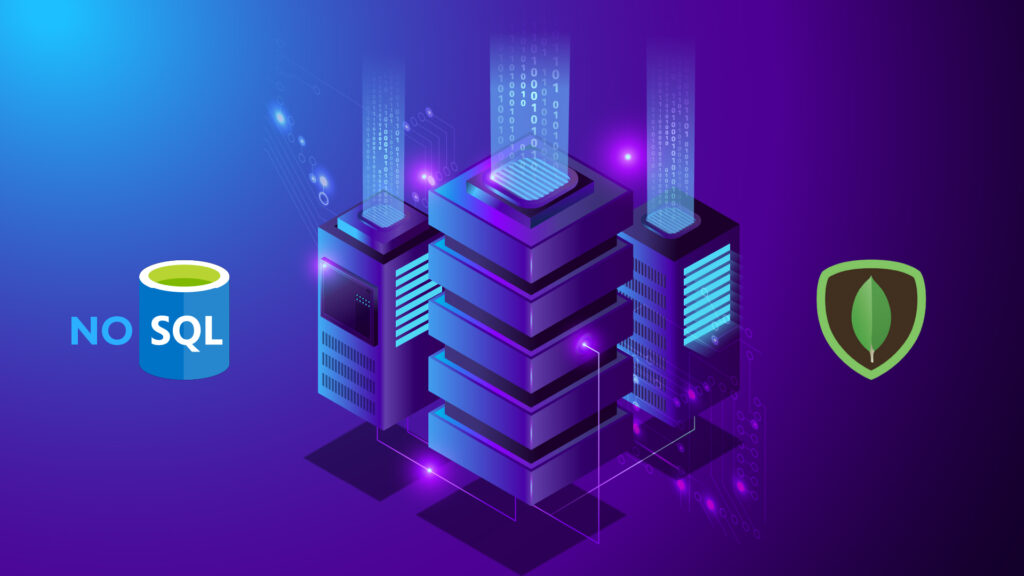
While building enterprise systems, choosing between SQL and NoSQL databases is a pivotal decision for architects and product owners. It affects the overall application architecture and data flow, and also how we conceptually view and process various entities in our business processes. Today, we’ll delve into MongoDB, a prominent NoSQL database, and discuss what it is, and when it can be a good choice for your data storage needs. What is MongoDB? At its core, MongoDB represents a shift from the conventional relational databases. Unlike SQL databases, which rely on structured tables and predefined schemas, MongoDB operates as a document-oriented database. As a result, instead of writing SQL to access data, you use a different query language (hence NoSQL). In MongoDB, data is stored as BSON (Binary JSON) documents, offering a lot of flexibility in data representation. Each of the documents can have different structures. This flexibility is particularly beneficial when dealing with data of varying structures, such as unstructured or semi-structured data. Consider a simple example of employee records. In a traditional SQL database, you would define a fixed schema with predefined columns for employee name, ID, department, and so on. Making changes to this structure is not trivial, especially if you have lots of volume, traffic and lots of indexes. However, in MongoDB, each employee record can be a unique document with only the attributes that are relevant to that employee. This dynamic schema allows you to adapt to changing data requirements without extensive schema modifications. How is Data Stored? MongoDB’s storage model is centered around key-value pairs with BSON documents. This design choice simplifies data retrieval, as each piece of information is accessible through a designated key. Let’s take the example of an employee record stored as a BSON document: { “_id”: ObjectId(“123”), “firstName”: “John”, “lastName”: “Doe”, “department”: “HR”, “salary”: 75000, “address”: { “street”: “123 Liberty Street”, “city”: “Freedom Town”, “state”: “TX”, “zipCode”: “12345” } } In this example, “_id” is the unique identifier for the document. If we specify the key or id, then MongoDB can quickly retrieve the relevant document object. Accessing any attribute is also straightforward. For instance, to retrieve the employee’s last name, you use the key “lastName.” MongoDB’s ability to store complex data structures, such as embedded documents (like the address in our example), contributes to its flexibility. MongoDB further enhances data organization by allowing documents to be grouped into collections. Collections serve as containers for related documents, even if those documents have different structures. For example, you can have collections for employees, departments, and projects, each containing documents with attributes specific to their domain. Query Language In any database, querying data efficiently is essential for maintaining performance, especially as the data volume grows. MongoDB provides a powerful query language that enables developers to search and retrieve data with precision. Queries are constructed using operators, making it easy to filter and manipulate data. Here’s a simple example of querying a MongoDB database to find all employees in the HR department earning more than $60,000: db.employees.aggregate([ { $match: { department: “HR”, salary: { $gt: 60000 } } } ]) The “$match” stage filters employees in the HR department with a salary greater than $60,000. MongoDB’s query language provides the flexibility to construct sophisticated queries to meet specific data retrieval needs. One way to do that is to use aggregation pipelines. These enable you to do complex data transformations and analysis within the database itself. Pipelines basically consist of a sequence of stages, each of which processes and transforms the documents as they pass through. We saw the $match stage in the example above. There are other stages such as $group which allow us to group the results as needed. For example, to group all employees by their average salary by department if the salary is greater than $60,000, we can use a pipeline like this: db.employees.aggregate([ { $match: { salary: { $gt: 60000 } // Filter employees with a salary greater than $60,000 } }, { $group: { _id: “$department”, // Group by the “department” field avgSalary: { $avg: “$salary” } // Calculate the average salary within each group } } ]) Finally, while BSON documents, which store data in a binary JSON-like format, may not have predefined indexes like traditional SQL databases, MongoDB provides mechanisms for efficient data retrieval. MongoDB allows you to create indexes on specific fields within a collection to improve query performance. These indexes act as guides for MongoDB to quickly locate documents that match query criteria. In our example, to optimize the query for employees in the HR department, you can create an index on the “department” and “salary” fields. This index will significantly speed up queries that involve filtering by department and salary. With the appropriate indexes in place, MongoDB efficiently retrieves the matching documents. Without an index, MongoDB would perform a full collection scan, which can be slow and resource-intensive for large datasets. It’s important to note that indexes have trade-offs. While they enhance query performance, they also require storage space and can slow down write operations (inserts, updates, deletes) as MongoDB must maintain the index when data changes. Therefore, during database design, it is important to look at the applications needs and strike a balance between query performance and index management. Performance Scalability MongoDB’s scalability feature also sets it apart from traditional SQL databases. Since it stores document objects instead of relational rows, it can offer both vertical and horizontal scalability, allowing you to adapt to changing workloads and data volume. Vertical scaling involves adding more resources (CPU, RAM, storage) to a single server, effectively increasing its capacity. This approach suits scenarios where performance can be improved by upgrading hardware. This is the typical method used to upgrade traditional RDBMS systems. In contrast, horizontal scaling involves distributing data across multiple servers or nodes,
Transformative Role of AI in Custom Software Development
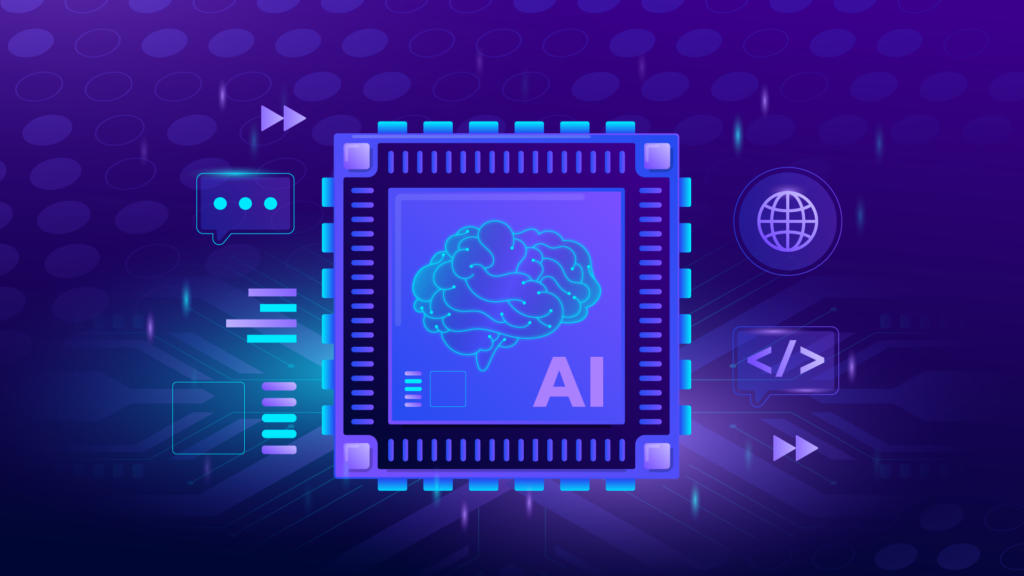
Welcome to the world of AI in custom software development. In this blog post, we will get into the impact of AI on custom software development in the enterprise. The emergence of artificial intelligence promises to revolutionize how we create applications and the larger business technology ecosystems. While AI brings the benefits of automated code generation and improved code quality, it is important to understand that there is still a critical place for human expertise in defining the application structure and overall enterprise tech architecture. Streamlining the Development Workflow First, let’s explore how AI can enhance the development process. This will: Create significant savings in mundane software development tasks. Empower developers to be more productive. It is common in every application development scenario where developers spend a significant amount of their time writing repetitive lines of code that perform similar tasks. We often call this software code as boilerplate code. These tasks could involve tasks like authentication, data validation, input sanitization, or even generating code for common functionalities such as calling APIs and so on. These tasks, although necessary, can be time-consuming and monotonous, preventing developers from dedicating their efforts to more critical aspects of the development process. Even today, accelerators like Intelligent Quality Accelerator (IQA), Intelligent Data Accelerator (IDA) and also shortcuts exist to generate all this automatically for developers. However, with the advent of AI-driven tools and frameworks, this scenario can be enhanced much further. The code generation is now context aware instead of just being code that needs to be customized. This will provide developers with a significant productivity boost. For example, let’s consider a developer who needs to implement a form validation feature in their application. Traditionally, they would have to write multiple lines of code to validate each input field, check for data types, and ensure data integrity. With AI-powered code generation, developers can specify their requirements, and the AI tool can automatically generate the necessary code snippets, tailored to their specific needs. This automation not only saves time and effort but also minimizes the chances of introducing errors. Thus, by leveraging AI algorithms, developers can streamline their workflow, increase efficiency, and devote more time to higher-level design and problem-solving. Instead of being bogged down by repetitive coding tasks, they can focus on crafting innovative solutions, creating seamless user experiences, and tackling complex challenges. The Importance of Human Expertise While AI excels at code generation, it is important to acknowledge that the structure of an application goes beyond the lines of code. Human expertise plays a key role in defining the overall structure, ensuring that it aligns with the intended functionality, architecture, and user experience. Consider a scenario where an organization wants to develop an application that processes customer returns. The application needs to have modules for managing customer information, tracking interactions, looking up merchandise and vendor specific rules, and generating reports. AI can assist in generating the code for these individual smaller modules based on predefined patterns and best practices. However, it is the human experts who possess the domain knowledge and understanding of the business requirements to determine how these modules should be structured and interact with each other to deliver the desired functionality seamlessly. Software architects or senior developers collaborate with stakeholders to analyze the business processes and define the architectural blueprint of the application. They consider factors like scalability, performance, security, and integration with existing systems. By leveraging their expertise, they ensure that the application is robust, extensible, and aligned with the organization’s long-term objectives. Since developing a software application often involves integrating it within an existing tech ecosystem and aligning it with the organization’s overall technology architecture, human input plays a critical role. Let’s consider another scenario where an organization plans to build a new e-commerce platform. The enterprise tech architecture needs to consider aspects such as the selection of the platform software, desired plugins, external database systems, deployment strategies, and security measures. While AI can help implement detailed software functionality, it is still the human architects who possess the expertise to evaluate and select the most suitable architecture that aligns with the organization’s specific requirements and constraints. Better Talent Management With AI assisting with custom software development, the management of skills and talent within an enterprise can be significantly improved. As developers are relieved from the burden of mundane coding tasks, they can focus on working at a higher level. That enables them to better leverage their expertise to drive innovation and solve complex problems. Let’s consider an example of an enterprise team tasked with integrating a new e-commerce platform into an existing system. Traditionally, integrating a new e-commerce platform would involve writing custom code to handle various aspects such as product listing, shopping cart functionality, payment processing, and order management. This process would require developers to invest considerable time and effort in understanding the intricacies of the platform. They would have to learn specific APIs and would have to implement much of the necessary functionality from scratch. However, with the aid of AI in code generation, developers can automate a significant portion of this process. They can leverage AI-powered tools that provide pre-built code snippets tailored to the selected e-commerce platform. This allows developers to integrate the platform into the existing system much faster. Thus, the integration of AI in custom software development not only improves productivity and efficiency but also alleviates the pressure of talent management and hiring within enterprises. As AI automates the base-level coding tasks, the demand for volume diminishes. AI helps make skills more transferable across different projects and reduces the need for hiring a large number of developers solely focused on low-level coding tasks. With AI handling the foundational coding work, this shift allows organizations to prioritize hiring developers with expertise in areas like software architecture, system integration, data analysis, and user experience design. Additionally, the adoption of AI-powered tools and frameworks enables developers to explore new technologies more easily. They can adapt their existing skill sets to different projects and platforms, reducing
Rethinking Software Application Architecture with AI: Unlocking New Possibilities – Part 2
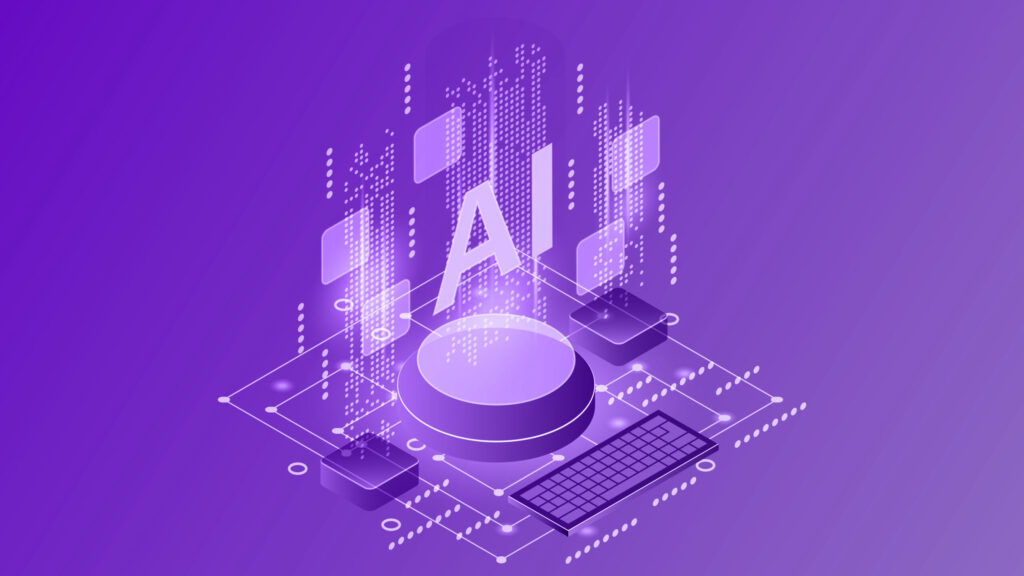
Welcome back! In our previous blog post, ” Rethinking Software Application Architecture with AI: Unlocking New Possibilities – Part 1”, we explored the transformative impact of AI on software application development. We discussed the need to rethink traditional architecture and design, focusing on leveraging AI-driven insights to improve user experience. If you missed that, be sure to check it out for a comprehensive understanding of the foundations of AI-enabled software application development. In this blog post, we will continue our exploration by delving into parts 3 and 4 of this series. To recap, the 4 parts are: Harnessing the Power of AI Models Transforming Data into Predictive Power Creating a Feedback Loop Evolution of Enterprise Architecture Guidelines and Governance We will dive into the vital aspects of feedback loop and data enrichment, as well as the evolution of enterprise architecture guidelines and governance practices. These elements play a crucial role in optimizing user experience, enhancing data-driven insights, and ensuring responsible AI practices. So, let’s continue our journey into the world of AI-enabled software application development! Creating a Feedback Loop In the age of AI, it’s essential to establish a feedback loop between the application and AI models. This feedback loop allows the application to continuously improve user experience and enrich the underlying data store on which the AI models operate. One way to implement the feedback loop is by capturing user interactions and behavior within the application. This data can be fed back into the AI models to refine their understanding of user preferences, patterns, and needs. For instance, an AI-powered customer portal can learn from user interactions to provide more accurate and contextually relevant experiences over time. By continuously analyzing and incorporating user interactions, the application can adapt its behavior and offer an improved experience. On the other hand, we can enhance the traditional data lakes by using the application data itself to enrich the underlying AI models. As users interact with the application, their data can be anonymized and aggregated to train and refine AI algorithms which can improve experiences across the enterprise. The feedback loop also enables the application to adapt to changing user needs and preferences. By monitoring user interactions and analyzing feedback, software developers can identify areas of improvement and prioritize feature enhancements. This iterative process ensures that the application remains relevant and aligns with user expectations over time. To facilitate the feedback loop, it is crucial to establish robust data governance practices. This involves ensuring data privacy, security, and compliance with regulatory standards. Users must have control over their data and be provided with transparent information about how their data is being utilized to enhance the application’s AI capabilities. By building trust and maintaining ethical data practices, software applications can foster a positive user experience and encourage user engagement. In the next section, we will explore how the evolution of enterprise architecture guidelines and governance is essential in the context of AI-enabled software application development. Evolution of Enterprise Architecture Guidelines and Governance AI-enabled software application development necessitates a rethinking of enterprise architecture guidelines and governance practices. Traditional approaches may not fully encompass the unique considerations and challenges posed by AI integration. To ensure successful implementation and maximize the benefits of AI, we must adapt the architecture frameworks and governance processes accordingly. Here are a few ways in which this can be accomplished: Modular Design and Microservices Architecture: AI integration often requires the utilization of specialized AI services or models. To enable seamless integration and scalability, organizations should adopt an approach that allows the AI insights to be available in real time to the applications that may need it. This is also the concept behind Ignitho’s Customer Data Platform architecture. Data Management and Infrastructure: AI relies heavily on data, and we must develop robust data management strategies to ensure data quality, security, and accessibility. This includes implementing data privacy and security measures and optimizing data infrastructure to handle the increased demands of AI processing and storage. Organizations should also consider the integration of data lakes, data warehouses, or other data management solutions that facilitate AI model training and data analysis. Ethical Considerations: With AI’s growing influence, ethical considerations become paramount. Organizations must establish guidelines that include ensuring fairness, transparency, and accountability in AI algorithms, identifying and mitigating bias in data sources, and respecting user privacy and consent. Ethical guidelines should be incorporated into the governance processes to uphold responsible AI practices. Performance and Scalability: AI integration can introduce new performance and scalability requirements. AI models often require significant computational resources and can place additional demands on the infrastructure. Scalability considerations should be incorporated into the architecture design to accommodate the potential growth of data volumes, user interactions, and AI workloads. Continuous Monitoring and Iterative Improvement: AI-enabled applications require continuous monitoring and iterative improvement to ensure their effectiveness and accuracy. The governance processes should review monitoring mechanisms to track this. Feedback loops, as discussed earlier, play a crucial role in capturing user interactions and improving AI models. Continuous improvement practices should be integrated into the governance processes to drive ongoing optimization and refinement. By evolving enterprise architecture guidelines and governance practices to embrace AI-enabled software application development, organizations can unlock the full potential of AI while mitigating risks and ensuring responsible use. Conclusion: Unleashing the Potential of AI-Enabled Applications AI-enabled software application development is a game-changer. By embracing AI, rethinking architecture, and evolving the governance processes, organizations can unlock significant potential. These key takeaways shape the path to success (we covered 1 and 2 in Part 1 of this blog): Embrace API-enabled applications to access AI models and insights. Harness AI-driven insights to provide predictive capabilities and empower users. Establish a feedback loop to continuously improve user experience and enrich data stores. Adapt architecture and governance to support modular design, robust data management, ethics, and scalability. AI-enabled software applications present immense possibilities. Organizations can create intelligent, user-centric applications that drive informed decision-making and operational efficiency. Contact us if you want to know more about our product engineering services.
Rethinking Software Application Architecture with AI: Unlocking New Possibilities – Part 1
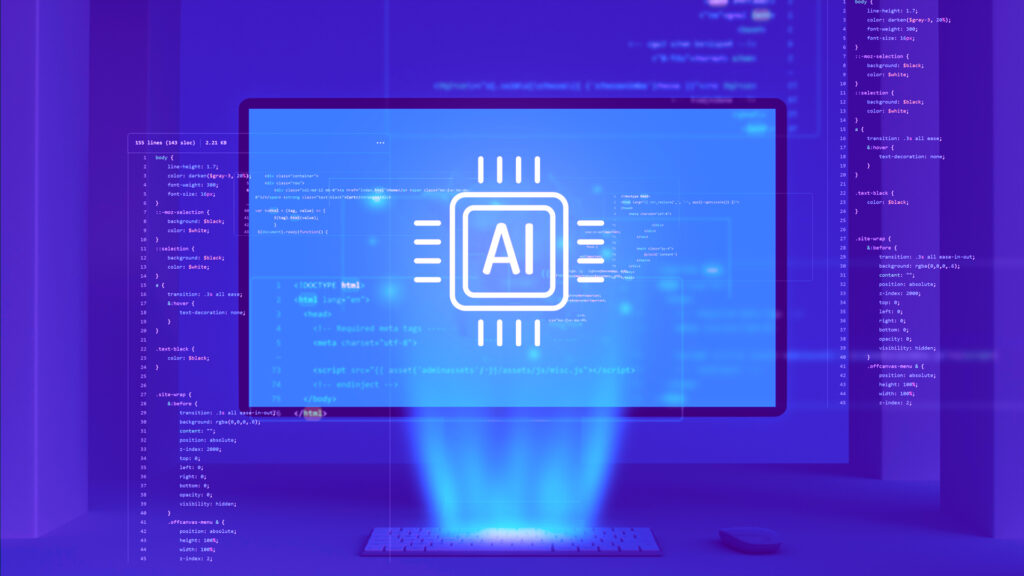
In today’s rapidly evolving technological landscape, the integration of artificial intelligence (AI) is reshaping the way we develop and design software applications. Traditional approaches to software architecture and design are no longer sufficient to meet the growing demands of users and businesses. To harness the true potential of AI, we need to reimagine the very foundations of software application development. With our AI led digital engineering approach, that’s exactly how we are approaching software application development and engineering. In this blog post, we will explore how AI-enabled software application development opens up new horizons and necessitates a fresh perspective on architecture and design. We will delve into key considerations and highlight the transformative power of incorporating AI into software applications. Note: In this blog we are not talking about using AI to develop applications. That will be the topic of a separate blog post. This blog has 4 parts. Harnessing the Power of AI Models Transforming Data into Predictive Power Creating a Feedback Loop Evolution of Enterprise Architecture Guidelines and Governance We’ll cover parts 1 and 2 in this blog. Parts 3 and 4 will be covered next week. 1. Harnessing the Power of AI Models with APIs In the era of AI, software applications can tap into a vast array of pre-existing AI models to retrieve valuable insights and provide enhanced user experiences. This is made possible through APIs that allow seamless communication with AI models. Thus, a key tenet of software engineering going forward is the inclusion of this new approach of leveraging AI to enhance user experience. By embracing this, we can revolutionize how our software interacts with users and leverages AI capabilities. Whether it’s natural language processing, computer vision, recommendation systems, or predictive analytics, APIs provide a gateway to a multitude of AI capabilities. This integration allows applications to tap into the collective intelligence amassed by AI models, enhancing their ability to understand and engage with users. The benefits of API-enabled applications that can leverage AI are manifold. By integrating AI capabilities, applications can personalize user experiences, delivering tailored insights and recommendations. Consider an e-commerce application that leverages AI to understand customer preferences. By calling an API that analyzes historical data and user behavior patterns, the application can offer personalized product recommendations, thereby increasing customer satisfaction and driving sales. Applications also have the potential to dynamically adapt their behavior based on real-time AI insights. For example, a customer support application can utilize sentiment analysis APIs to gauge customer satisfaction levels and adjust its responses accordingly. By understanding the user’s sentiment, the application can respond with empathy, providing a more personalized and satisfactory customer experience. It follows that the data and AI strategy of the enterprise must evolve in tandem to enable this upgrade in how we define and deliver on the scope for software applications. In the next section, we will delve deeper into the concept of AI-driven insights and how they can transform the way we present data to users. 2. AI-Driven Insights: Transforming Data into Predictive Power With enterprises investing significantly in AI, it is no longer enough to present users with raw data. The true power of AI lies in its ability to derive valuable insights from data and provide predictive capabilities that go beyond basic numbers. By incorporating AI-driven insights into software applications, we can empower users with predictive power and enable them to make informed decisions. Traditionally, software applications have displayed historical data or real-time information to users. For instance, an analytics dashboard might show the number of defects in the past 7 days. However, with AI-driven insights, we can take it a step further. Instead of merely presenting past data, we can leverage AI models to provide predictions and forecasts based on historical patterns. This predictive capability allows users to anticipate potential issues, plan ahead, and take proactive measures to mitigate risks. AI-driven insights also enable software applications to provide context and actionable recommendations based on the data presented. For example, an inventory management application can utilize AI models to analyze current stock levels, market trends, and customer demand. By incorporating this analysis into the application, users can receive intelligent suggestions on optimal stock replenishment, pricing strategies, or product recommendations to maximize profitability. Furthermore, AI-driven insights can be instrumental in optimizing resource allocation and operational efficiency. For instance, in a logistics application, AI algorithms can analyze traffic patterns, weather conditions, and historical data to provide accurate delivery time estimations. By equipping users with this information, they can plan their operations more effectively, minimize delays, and enhance overall customer satisfaction. Next steps In this blog, we introduced the concept of AI-enabled software application development and emphasized the need to rethink traditional architecture and design. It is important to leverage AI models to modify behavior and engage users effectively. Additionally, applications must go beyond raw data to provide predictive capabilities. These insights empower users and enable informed decision-making. Moving forward, in the next blog post, we will delve into parts 3 and 4, which will focus on the feedback loop between applications and AI models for enhancing user experience and enriching the data store, as well as the evolution of enterprise architecture guidelines and governance in the context of AI-enabled software application development. Stay tuned for the next blog post to learn more about these crucial topics.
How to choose the right Agile methodology for project development in a frugal way
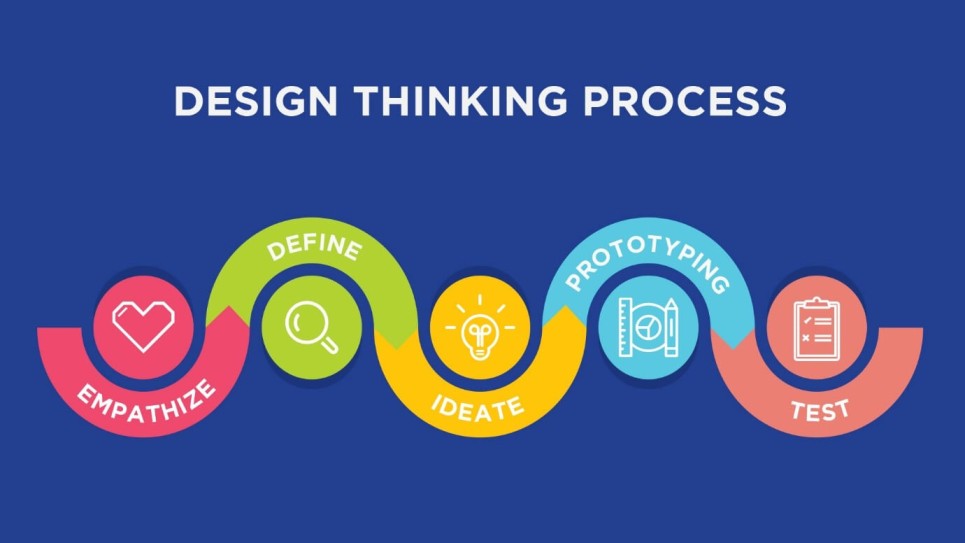
Earlier, the role of technology was limited to be a mere business enabler. But the evolving business scenario now visions technology as the major business transformation element. This puts enterprises under tremendous pressure to build disruptive products with capabilities to transform the entire business world. The role of an efficient project management model for software development is crucial here to bring the right technology solutions at the right time. Traditional project development models such as Waterfall are too rigid and depend explicitly on documentation. In such models, the customers get a glimpse of their long-wished product/application only towards the end of the delivery cycle. Through continuous communication and improvements in project development cycle irrespective of the diverse working conditions, enterprises need to ensure that they get things done with the application development within the stipulated time without compromising on quality. Without an efficient delivery method, the software development team often comes under pressure to release the product on time. According to the survey done by Tech Beacon, almost 51% of the companies worldwide are leaning towards agile while a 16% has already adopted pure agile practices. While this statistic is in favour of agile for application development, there are some major challenges faced by both the service providers and customers while practising agile. Communication gap When the team is geographically distributed, communication gap is a common problem. In such a distributed agile development model, the transition of information from one team to another can create confusion and lose the essence of the context. An outcome-based solutions model with team members present at client locations can enable direct client interactions and prompt response between both the sides. Time zone challenges Another challenge that the client faces in a distributed agile development environment is the diverse time zones. With teams working in different time zones, it is often difficult to find out common work hours where every team is present at the same time. Through an outcome-based solutions model, the customers can stay relaxed and get prompt assistance during emergencies. Moreover, in such cases, the client stays updated about the progress of projects and iterations become easy. Cultural differences In a distributed agile team, the difference in work ethics, commitment, holidays and culture creates a gap between the development team and the customer. In situations like these, a panel of experts including ex-CIO’s and industry experts can be the helping aid to provide customers with valuable insights on current market trends and solutions to close any cultural gaps. Scope Creep Scope Creep is another issue faced by countless customers associated with agile teams working on software development projects out of multiple locations. Here, the missing pillar is a scrum master at offshore defining and estimating the tasks along with onsite representatives communicating every requirement from clients. A closer look at these challenges suggests the scope of a properly architected and innovative agile model to resolve these issues. Through a carefully devised agile strategy, it becomes quite easy for both the client and development sides to interact on a frequent basis and overcome the obstacles.